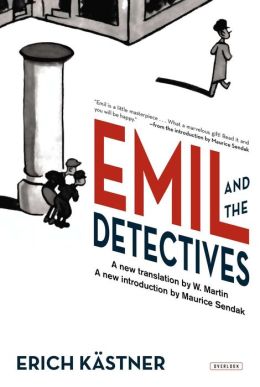Title: Emil and the Detectives
Author: Erich Kastner (Translated in 2007 by W. Martin)
Length: 159 pages
Genre: Mystery | Classic (1929)
Series or Stand Alone: Stand Alone
Content Appropriate For: Grades 3-6 (Note: 2 curse words are used)
Three adjectives that describe this book: simple, fun, believable
I chose this book as a children's classic for The Classics Club, even though it's not well-known or on many classics lists. This book is a classic, in part, because of the author's storied history. Largely a poet, Erich Kastner spoke out against the Nazis. In 1938 many of his books were burned.
Emil and the Detectives marks an important change in children's literature. At the time of its publication, most children's books were fantasies and/or clearly explicit moral lectures. Emil and the Detectives is set in contemporary Berlin, was an instant hit, and helped spur the "child detective" genre.
I really enjoyed Emil and the Detectives. It's a quick read and a pretty straight-forward mystery. As an interesting twist, the mystery is not who stole his money, but how will he get it back. In doing so, Emil garners the help of over 20 neighborhood boys who quickly set up a complex operation of spies, messengers, and phone-operators. It's a fun boy-fights-crime story.
Side Note: I was curious how much 140 German marks would be worth today. Using the information at a German history professor's website, I calculated it to be about $2,000. No wonder Emil was so desperate to get that money back!
I really appreciated that this translation (2007 by W. Martin) tried to use colloquial American idioms to help today's students understand and appreciate the intentions of the author. I'm sure there are lots of purists who disapprove of this approach.
One of my favorite aspects of the book is that Kastner opened with 10 paragraph-long vignettes and illustrations to tell us about each character and setting. I've never seen that before and I thought it was effective and very fun.
My only issue with this book is that the only girl character, Pony the Hat, frequently makes comments about women's work. For instance, she serves the boys hot chocolate and explains that she has been washing dishes because "women's work is never finished." Here she is serving the boys:
When I share this book with students, I plan to include conversation with them about this issue, how women were viewed in the 1920's, and how that view has shifted and still has room to grow.
Bottom Line: This text is a fun mystery, and could provide an interesting springboard for discussing gender roles as portrayed in literature.
3.5 stars




No comments:
Post a Comment